From Julia Moskin in The New York Times:
"A highly contagious fungus that destroys tomato plants has quickly spread to nearly every state in the Northeast and the mid-Atlantic, and the weather over the next week may determine whether the outbreak abates or whether tomato crops are ruined, according to federal and state agriculture officials...
...Authorities recommend that home gardeners inspect their tomato plants for late blight signs, which include white, powdery spores; large olive green or brown spots on leaves; and brown or open lesions on the stems. Gardeners who find an affected plant should pull it, seal it in a plastic bag and throw it away, not compost it."
For the full article click, here.
Welcome to Heirloom Gardener
Saturday, July 18, 2009
Outbreak of Fungus Threatens Tomato Crop
Posted by
Julia Erickson
at
9:06 PM
![]()
![]()
Labels: Heirloom and Organic Food, New Jersey / Local Interest
Subscribe to:
Post Comments (Atom)
Search Heirloom Gardener
Labels
- About Blogging
- Annuals/Biennials and Perennials
- Autumn Garden
- Books and Movies
- Botanical Gardens
- Bulbs and Tubers
- Children's Garden
- Chrysanthemum
- Clematis
- Container Gardening
- Crocus tommasiniasus roseus
- Cut and Forced Flowers
- Cutting and Rose Gardens
- Dahlias
- Deep Thoughts About Gardening
- Egg Garden
- Fences Arbors Walls and Paths
- Floral arrangements
- Front Border
- Fun Stories About Gardening
- Garden Bloggers' Bloom Day
- Garden Bloggers' Design Workshop
- Garden Planning
- Gardening Blogs
- Gardening Tools and Structures
- Gardening with Children
- Goldberry Hill
- Heirloom and Organic Food
- Hibiscus
- Holidays
- Hydrangeas
- Japanese Beautyberry
- Lilies
- Mixed Borders
- New Jersey / Local Interest
- Nurseries
- Online Gardening Resources
- Peonies
- Pest Control
- Picture This Photo Contest
- Piet Oudolf
- Poppies
- Propagation and Seeds
- Pruning and Maintenance
- Roses
- Seed Heads
- Self Seeders
- Shrubs
- Spring Garden
- Summer Garden
- Trees
- Wildlife in the Garden
- Winter Garden
- Zinia
Blog Archive
-
▼
2009
(257)
-
▼
July
(36)
- A Summer Visit to the New York Botanical Garden (N...
- A Summer Visit to the New York Botanical Garden (N...
- A Summer Visit to the New York Botanical Garden (N...
- More Ticks, More Misery: A mother's experience in...
- Lightning, Thunder, Hail and Rainbows
- Bread Seed Poppy Metamorphosis from Flower to Seed...
- Clematis 'Kermesina' on the tutuer in the Cutting ...
- White Elegance Lilies next to the Stone Staircase
- Rabid Raccoons confirmed in the New York Area
- Clematis 'Star of India' in the Rose Garden
- He was buried on his farm in a grove off a walking...
- Clematis 'Venosa Violacea' in the Rose Garden
- Clematis x triternata 'Rubromarginata' on the fenc...
- Thank you Queenmother Mamaw!
- Gravetye Beauty Clematis on Goldberry Hill
- Outbreak of Fungus Threatens Tomato Crop
- Duchess of Albany Clematis in the Front Border
- Julie Correvon and Pagoda Clematis on the Arbor in...
- Prince Charles Clematis in the Front Border
- Garden Bloggers' Bloom Day for July 2009: Hydrang...
- Etoile Rose Clematis in the Cutting Garden
- Arabelle Clematis on the Fence in the Cutting Gard...
- Lady Northcliff Clematis in the Cutting Garden
- White Pet Polyantha Rose (1879) in the Egg Garden
- Henryi Clematis in the Front Border
- Bee balm: Monarda didyma Cambridge Scarlet in the...
- Globe Thistle on Lilac Hill
- African Queen Lily (1958) in the Rose and Egg Gardens
- Teasel on Lilac Hill
- Picture This Photo Contest Entry on Flowering Tree...
- New Blogger Gadget Added: Recent Comments
- Regal Lily (1905) in the Hydrangea Border
- Jackmanii Clematis on the Lattice behind the Hydra...
- How to Protect the Vegetable Garden from the Groun...
- Crimson Bedder (Red) and Self-Seeded (White) Nicot...
- Japanese Irises in the Long Border
-
▼
July
(36)










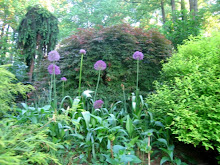
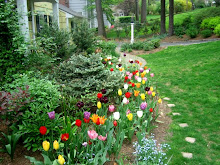
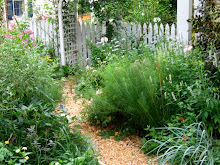
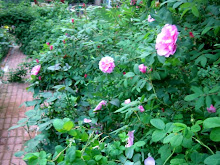

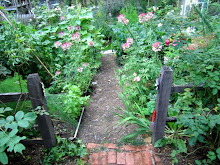

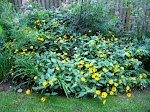





6 comments:
Oh no, we will have to look in the morning. This is bad news. Thanks for the info.
QMM
Dear Heirloom there is cake for you on my blog in honor of your flowers.
7/18/ or 7/19.
QMM
My plants are looking terrible, but the fruit is fine on my tomatoes this year. I have had a lovely supply but not tons like I normally get. Is this the same problem that you're talking about?
Ciss B,
From your description, no this sounds like something different, where the plant fruits, but the fruit then is infected on the vine.
-Heirloom Gardener
Thanks! Though much of the description sounds similar, I was confused since my fruit is simply perfect, and has continued to grow fairly well and rippen.
I heard about this the other week in an organic gardening and pest management course and promptly came home to look at my tomatoes. One is wilting - but doesn't look like late blight. I can't figure it out (can't see any sign of disease or insect damage). Anyway, thanks for the warning - gardeners can never be too careful.
Post a Comment